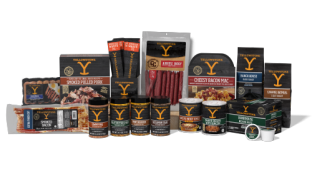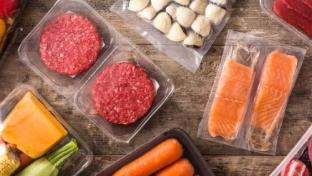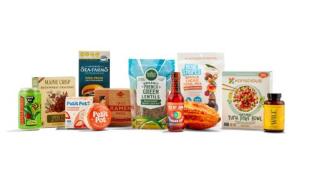Consumers' Push for Protein Reflected Across Grocery Categories
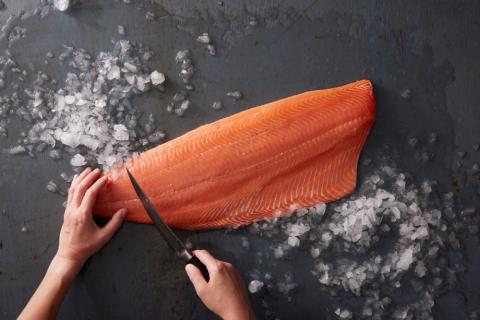
If protein is the building block of the diet, it seems that the market for protein-rich offerings is getting more stacked. Consumers’ push for protein is reflected across grocery categories and in offerings that span dayparts and formats.
According to Innova Market Insights, there was a 10% bump in the combined annual growth rate of new product launches with protein claims from 2017 to 2022. This year’s Food and Health Survey from the International Food Information Council (IFIC) found that for the 52% of Americans who follow a specific eating pattern, a high-protein diet was the most common. IFIC’s survey also revealed that 67% of consumers are trying to eat more protein.
[Read more: "EXCLUSIVE: Kroger Enables Consumers to Eat Their Way to Better Health"]
Rick Stein, VP of fresh foods at FMI — The Food Industry Association, says that protein popularity is rooted in different motivators. “Consumers are constantly reminded by health advisors and advocates that the proper amount of protein has great health benefits,” notes Stein. “In addition, protein can curb appetite. Manufactures are now marketing protein in a myriad of products, from health bars, beverages [and] cereals [to] other forms of protein.”
Wild About Protein
The retail meat department remains a destination for protein-seeking shoppers. According to FMI, poultry, beef and pork are tops when it comes to consumer protein preferences.
Red meat remains a protein stalwart as meat sales rose 5.7% last year to hit another record, FMI’s 2023 “Power of Meat” report has found.
Industry suppliers continue to promote the high protein content of meat and introduce new products. Seaboard Foods, for example, recently added a new line of USA Prime pork under its Prairie Fresh brand.
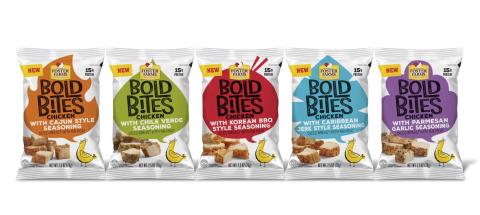
“Consumers are continuing to navigate inflation with their grocery bill and are on the hunt for high-value products,” says Emma Pierce, brand manager for Prairie Fresh Signature. “Pork remains a great option for shoppers, providing exceptional value with the current lower per-pound price compared with other proteins, as well as a culinary canvas that allows for maximum creativity. In addition to consumers shopping for high-value products, they are also continuing to seek hassle-free quality solutions like pre-seasoned proteins to quickly and easily put a wholesome meal on the table.”
Shoppers also continue to flock to poultry as a protein source. According to the National Chicken Council, 84% of consumers say that they’ve prepared a weekday dinner with fresh chicken.
Poultry brands are meeting customer preferences with products that have a protein halo. Tyson Foods recently launched chicken breast sandwiches and sliders containing 23 grams and 19 grams of protein, respectively. Meanwhile, Foster Farms has introduced Bold Bites chicken snacks delivering 15 grams of protein per serving and sold in single-serve pouches.
Although seafood purchases have come off pandemic highs, sales last year were still above pre-COVID levels and opportunities exist for future growth. The Alaska Seafood Marketing Institute notes that 82% of consumers prefer seafood that’s wild and sustainably sourced, but they want more information on how to choose seafood.
Seafood brands are helping shoppers up their protein intake with inventive offerings like Blue Circle Foods’ Happy Fish product. With 20 grams of protein per serving, the fish-shaped salmon pieces cook from frozen in eight minutes.
Dairy is another mainstay category for animal-sourced protein. According to the research site Statista, 19% of consumers report taking in more dairy-based protein in the past year.
Some dairy-centric CPGs use protein content as a hook: For instance, the Fairlife brand from The Coca-Cola. Co. offers ultra-filtered milk with 50% more protein than traditional milk. (For more about milk, read "Milk and Juice Fight to Retain Their Healthy Halos")
Within dairy, the yogurt category has higher-protein selections as well. Danone North America’s Oikos Pro yogurt boasts 20 grams of protein per serving, while General Mills’ Ratio Foods, which already has a line of Keto yogurt products, has added a protein cultured dairy snack.
The Alt Vault
The pace of R&D in the plant-based protein arena continues at a good clip. Within this sector, though, there are some ebbs and flows.
For example, the wave of plant-based meat activity may have crested. According to the insights firm Circana, combined sales of refrigerated and frozen plant-based meat alternatives (PBMA) dropped 8.9% from the first quarter of 2022 to the first quarter of 2023.
Research firm Mintel reported a similar decline. “PBMA sales have slid from their peak in 2020 as consumers abandon the category in favor of less-expensive protein options,” observes Caleb Bryant, associate director of food and drink reports at Mintel. “The category continues to struggle with negative perceptions even among those who follow a reduced-meat diet.”
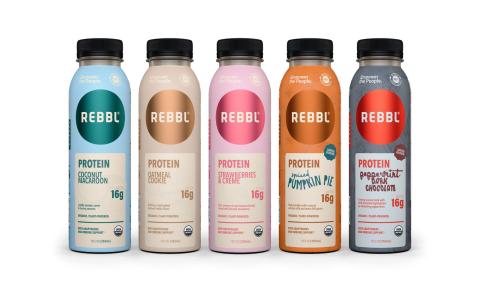
New products are still arriving in this space, albeit at a slower pace. This fall, Morningstar Farms is unveiling a protein-rich plant-based Steakhouse Style Burger. Earlier this year, Teton Waters Ranch debuted Teton Taste Buds products for kids, made with a blend of grass-fed beef and vegetables.
Meanwhile, robust sales of plant-based milks and creamers affirm shopper interest in alt-dairy offerings with protein benefits. NielsenIQ reports that the alternative-milk beverage industry jumped 11.1% over the previous year, propelled by growing consumer health consciousness and environmental sustainability, along with innovations from suppliers.
Grocers also carry high-protein egg alternatives to reach shoppers who gravitate to plant-based options. The JUST Egg brand shared data from NielsenIQ showing a 14% increase in the number of stores carrying JUST egg products. That company is also branching out with a new line of JUST Egg Meals.
Centered on Protein
Shoppers can satisfy their cravings for protein by picking up products in the center store, too.
One case in point is the snack aisle. Offerings there include Wilde Protein Chips, a chicken-based protein snack available at Whole Foods, Sprouts, Coscto, Target and Walmart stores. Meat sticks are also a go-to for protein-minded shoppers, with options like new Stickado meat snacks from Fiorucci, featuring 8 grams of protein per stick.
Another example is the bread aisle. In fact, according to Innova, bakery is the top category for plant and non-animal protein ingredients. Shoppers looking for the word “protein” can find it in products like Thomas’ Cinnamon Protein English Muffins, with 9 grams of protein per serving, and The Better Bun from BetterBrand, with 20 grams of plant-based protein per serving.
Certain cereals also herald high protein levels. Plant-forward breakfast company Seven Sundays and sustainable food processor SunOpta collaborated to create a new Oat Protein Cereal line made with an upcycled protein powder, while the Kellogg. Co. has expanded its Special K cereal line to include Special K High Protein, packed with 20 grams of protein per serving.
Then there’s pasta. The Barilla line now includes chickpea rotini with 21 grams of plant protein per serving. Shoppers can also pick up a heat-and-serve macaroni dish with 20 grams of protein from the Muscle Mac brand.
Chilling to the Max
Shoppers likewise encounter more high-protein offerings in the frozen and refrigerated areas of the store.
Frozen meals represent a high-growth segment for protein lovers. The Real Good Food Co. recently rolled out cheesy burritos with two times the protein of conventional burritos; Applegate Farms LLC has developed high-protein Applegate Naturals Frittata Bites made with eggs, chicken breakfast sausage and bacon; and the venerable Lean Cuisine brand now includes several Protein Kick varieties containing up to 17 grams of protein per serving.
In beverages, Bolthouse Farms offers a “protein plus” nut butter drink, while Rebbl markets a plant-powered elixir with 16 grams of protein. Those are just some examples from another category ripe for protein innovation.


